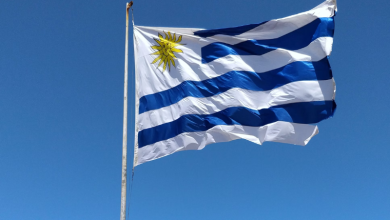Symbol of Climate Change: Everything You Should Know About ‘Climate Stripes’

In 2017, Ellie Highwood, then professor of climate physics at the University of Reading in the UK, uploaded an image on Twitter of a “global warming blanket” she had crocheted. The item showed rows of colour representing average global temperature changes across time.
She has no idea during that period that a graphic version later created by a colleague would start being considered an international symbol of the climate crisis. The “climate stripes” image has been embraced by scores of activists across the globe.
It has been used for print editions of The Economist and the Folha de S.Paulo, a Brazilian newspaper, apart from being seen as the cover image for Greta Thunberg’s The Climate Book. The stripes have also been worn in London Fashion Week catwalks.
The climate stripes were recently shown in a three day music festival in Mexico City. They have prominently been displayed as public infrastructure, on public transport such as electric trams and buses in Europe, decorated buildings and even natural landmarks.
Climate Stripes Based On Rigorous Scientific Data & Analysis
The stripes are a data visualisation method to communicate the long-term trend of temperature change over time. The concept involves representing each year’s temperature as a coloured stripe. They have been an engaging way to convey the impact of climate change.
Typically, blue stripes on the image represent cooler-than-average years, and red stripes are for warmer-than-average years. The length of each stripe corresponds to the magnitude of the temperature anomaly (the deviation from the long-term average) for that year.
The climate stripes are often used to illustrate the significant and consistent increase in global temperatures over the past decades. They have been a powerful and accessible tool for public engagement on the pressing topic.
Read More: Climate Change Is Bad News. But There Are 5 Real Reasons To Be Optimistic
The concept has become popular across the globe, and the stripes have been applied not only to global temperature data but also to regional and national information. They are based on rigorous scientific data and analysis, reflecting the actual changes over time.



